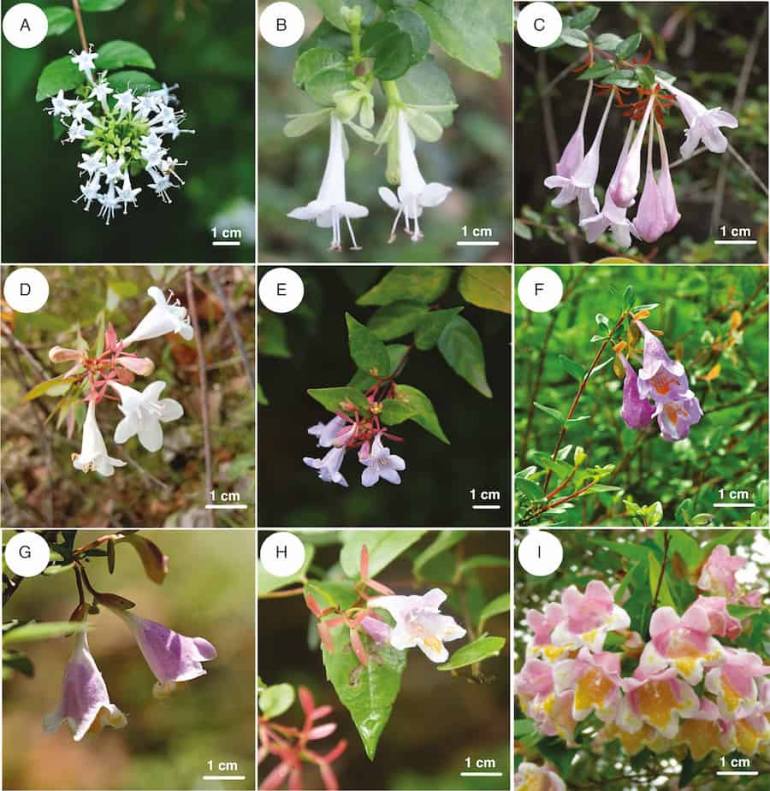Why are plant distributions patchy instead of continuous? Biogeographers tend to concentrate on a couple of answers. An apparent reason would be geographical change, mountain ranges rise, or continental plates drift, sundering one landmass into two. Another method might be a freak event. A hurricane blows through Kansas, lifting a farmhouse and some seeds to a new life in Australia, forming a new population of plants in a distant location. Qing-Hui Sun and colleagues wanted to know what explained the distribution of Abelia (Caprifoliaceae). They examined genetic data to see if they could explain why Abelia is found where it is.

Abelia (Caprifoliaceae) is a small genus with five species, including one artificial hybrid and several natural hybrids. The genus has a discontinuous distribution in Mainland China, Taiwan Island and the Ryukyu Islands, providing a model system to explore the mechanisms of species dispersal in the East Asian flora.
The botanists found that natural hybridization is extensive in Abelia, but diversification began around 50 million years ago in the early Eocene. Since then, the climate has warmed and cooled, meaning Abelia species’ ranges have expanded and contracted. The team identified several refugia in the Hengduan Mountains, in the southwest of China. They argue that the current disjunction is due to post-glacial contraction of the plants’ ranges.
READ THE ARTICLE
Sun, Q.-H., Morales-Briones, D.F., Wang, H.-X., Landis, J.B., Wen, J. and Wang, H.-F. (2021) “Phylogenomic analyses of the East Asian endemic Abelia (Caprifoliaceae) shed insights into the temporal and spatial diversification history with widespread hybridization,” Annals of Botany. https://doi.org/10.1093/aob/mcab139.





